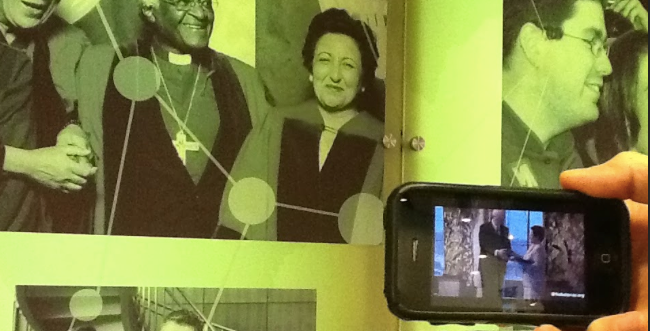What: As part of my practice as an educational developer in the area of learning technology @UBC it is important to have conversations and support faculty and staff with considering effective practice with technology in their teaching and learning context. Beyond supporting faculty working within the UBC Learning Technology ecosystem it is also valuable to provide insight into what is possible in teaching and learning and to help identify new developments. One of these developments in the rise of Augmented Reality. This is not entirely new, for example, fighter pilot helmets have had an element of AR since the 1980s. AR is the ability to create layers of data and media that can be activated either by visual markers or by geo tags.
For this project we worked in collaboration with the UBC Library to create an interactive media layer that can be activated by scanning your phone over different images on the libraries recognition wall. Media included archival interview footage, historical images and text overlays. For example, when you scanned an image of a woman reading located on the recognition wall, an video interview with her started playing on your device. Supporting this project was complex because of the level of innovation. We not only needed to locate appropriate archival media select platforms to support this (Layar), most importantly we needed to consider how people would interact with this narrative and how to share digital stories of place and objectives.
So What: Why does AR matter and what was the importance of this project? AR is important because with the advent of Google Glass and heads up displays a new way of accessing knowledge in context has begun to develop. It is difficult to know how this will begin to impact teaching and learning. Part of the university experience involves moving knowledge out of context. What does it mean to teaching and learning when this relationship begins to change? This project also helped faculty think about different media literacies and how these might effect the context of their teaching and learning.
Now What: As of 2014 AR remains in its infancy, although a number of project have started to be developed at UBC to support courses in Soil Science and clinical nursing, the possibilities seems vast. Imagine texts with embed media, experiential learning spaces with layers of data and knowledge, e.g. a botanical garden media about each plan embed in the context. The technology to do this has become accessible to faculty and staff with limited technological knowledge, the most important question becoming, how can this new media literacy transform current teaching and learning practices.
